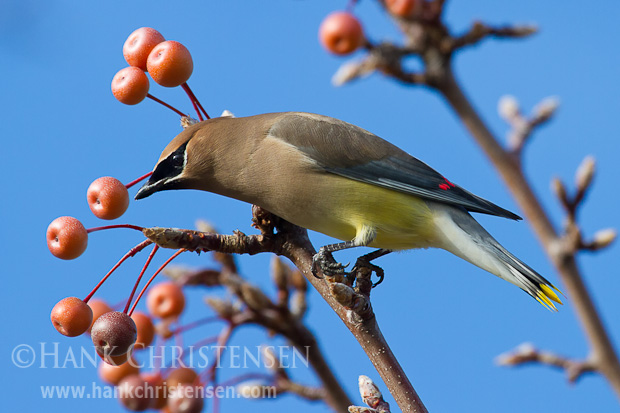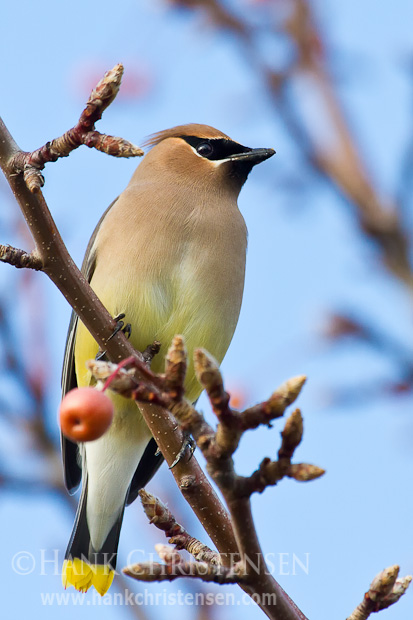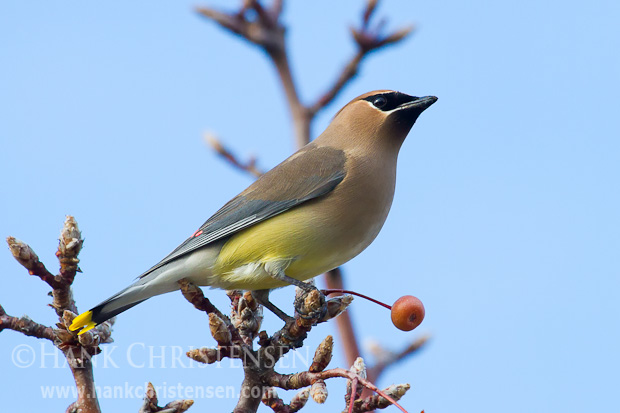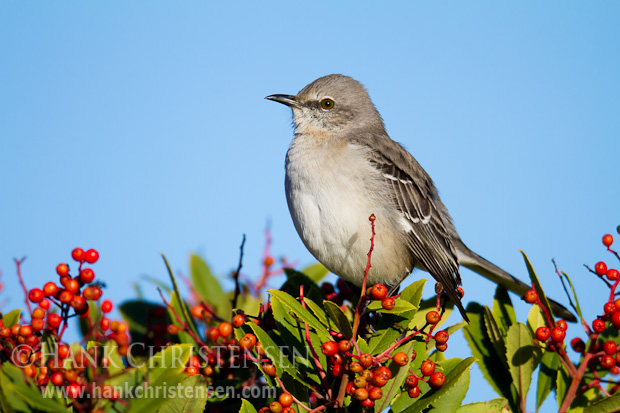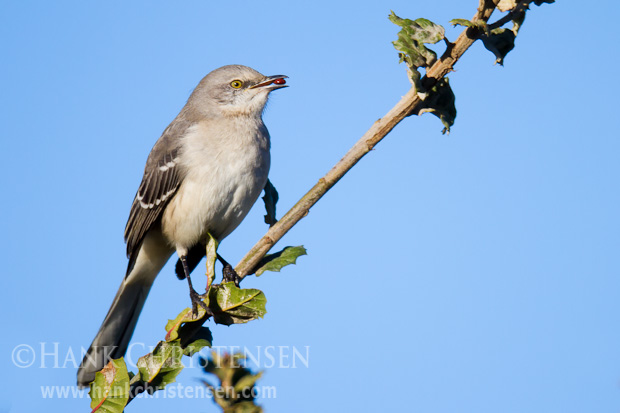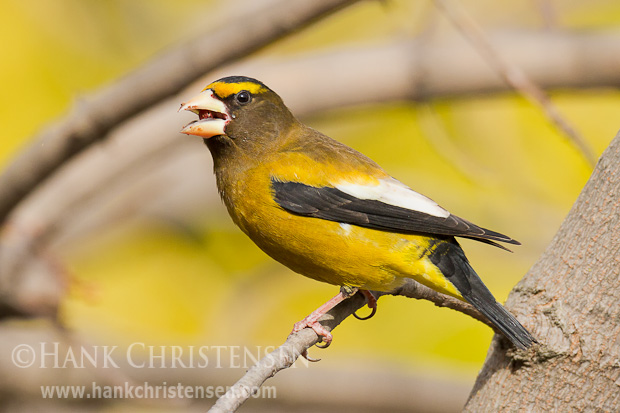
This winter, Santa Clara Valley was lucky enough to see several groups of evening grosbeaks take up residence is a couple of predictable locations. Word quickly spread throughout the birding and bird photographer communities. This species is not very common for this area, so it was a first time bird for many who found them (including me!) The grosbeaks returned to the same general area day after day for several months, providing everyone with great viewing and photo opportunities.

These photographs were all taken on the same day on the grounds of a technology firm. (Even the technology parks of Silicon Valley have their share of wildlife!) This particular gross (yes, a group of grosbeaks is called a “gross”) had about 20 females and 3 males. They flew between a number of chinese pistache trees within the same area. Between the flurry of activity and the loud noise of nuts cracking in their beaks, they resembled a swarm of locusts, stripping one tree bare and then moving on to the next.
They would do just about anything to get at the tree’s food. It was amazing to watch them hang almost completely upside-down from a branch in order to reach the nuts. Here a female shows her perching skills.
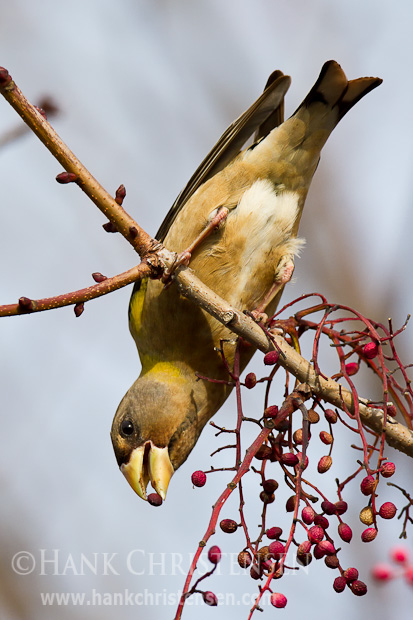
Not to be outdone, the males could dangle just as well.

Overall, I spent about an hour following these birds from tree to tree. When I finally left, they seemed just as energetic as when I arrived. It was a treat to see this rarity, especially in such numbers.


